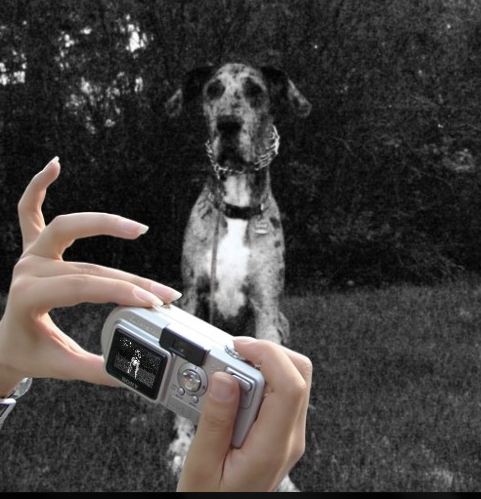Training a dog can be a difficult undertaking, which is why there are various training aids available. One such aid is a training collar, which is used to emphasize certain types of training and to make your job a little bit easier. Training collars should not be inhumane -- in fact, most of them aren't -- and the way you use your training collar will directly impact the speed and effectiveness of your training program. There are literally dozens of different types of training collars on the market, but here are a few of the most common.
Prong Collars
The very mention of a prong collar is enough to send some people running for the hills, but I've effectively used it on two of my giant breed dogs and if used correctly, they can work wonders. A prong collar is a training collar that consists of metal links through which metal prongs are spaced about an inch apart. When you correct your dog with the leash, the prongs lightly pinch the dogs neck, symbolizing the corrective action the mother dog gives her pups by picking them up by the scruff of the neck.
A prong collar can be inhumane when used in correctly as a training collar. For example, if your dog is the type to pull against the leash consistently, he or she will not benefit from the prong collar because it will lose its effectiveness. Dogs can easily become "immune" to the pinch of the prong collar after frequent use, and it should only be used as a corrective aid.
As training collars go, the prong collar is comparatively easy to use. Simply fasten the collar around your dog's neck, leaving approximately 1/2 inch of space between the prongs and your dog's skin.
Halti Collars
If you have a dog that is aggressive or is prone to lunging or snapping at other dogs or humans, the Halti collar might be the best training collar for you. This type of collar fits over the dog's head, keeps the mouth shut and helps to restrain the dog. It allows you to control the motion of the head, thereby exacting more control over the body. Some people consider this training collar difficult to use because most dogs will resist it at first. However, as a matter of safety, this training collar is one of the most effective.
When using the Halti Collar, make sure that the device is secured properly. You should never jerk on or pull up on a Halti collar because you run the risk of damaging your dog's neck or back. If you don't think that you can control your dog without jerking on the Halti collar, you might want to put your dog in training with a professional.
Choke Collars
Like the prong collar, the choke collar is surrounded by a wealth of controversy. Most dog owners recognize this training collar as effective and humane, while others fear the potential damage that can be caused by an overzealous dog or owner. It's true that the choke collar can cause permanent damage, or even death, to a dog if used incorrectly. However, this training collar is recommended by most dog trainers.
The choke collar works by tightening around the dog's neck either when the owner pulls the leash or the dog pulls on the collar. As soon as the tension is relieved, the collar ceases its "choking" action.
Training collars are not for use by the inexperienced and you should always learn how to use it before attempting to put it on your dog.
*with help from Steve Thompson and Jodi Laycock

Excellent info, Goliath!! I have used the prong and choke collar with great success. You are correct in that if used right, they are very useful. Thanks for posting this. <3
ReplyDeleteIt is a very informative and useful post thanks it is good material to read this post increases my knowledge. Bark Collar
ReplyDeleteThanks to share this post.training collar for dogs is a very good product.
ReplyDelete